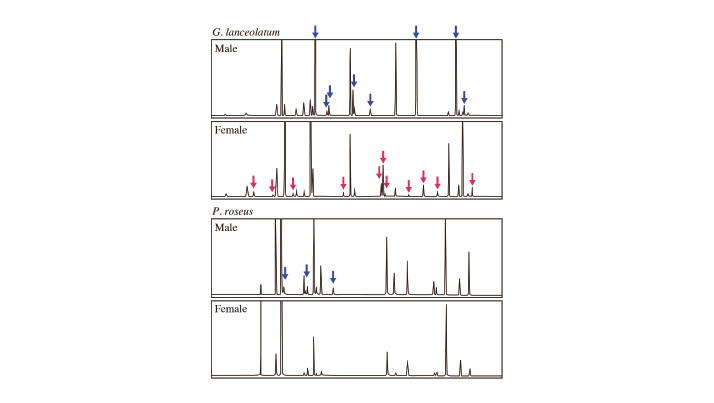Lead researcher Tomoko Okamoto and colleagues from Kyoto University, Japan, have analyzed floral scents from male and female flowers of the genera Phyllanthaceae to understand the behavior of female moths of the Epicephala genus (1). We caught up with her to find out more.
Why moths and flowers? At the base of my interest lies the question, “How did flowers evolve and diversify?” The blooms of each plant species have unique traits – shapes, fragrances, colors – that guide pollinator insects to ensure its reproduction. The evolutionary process behind floral scents is less well understood. When I was a university student, the mutualism between Phyllanthaceae and Epicephala was discovered by Makoto Kato. I was very surprised by the unique behavior of the female moth: she visits the male flower to collect pollen first, and then visits the female flower where she lays her eggs to secure food (from developing seeds) for her offspring. The moths visit only one host species, even if Phyllanthaceae plants of different species are growing side by side. And because they are nocturnal, it’s all done in total darkness. I felt sure that Epicephala moths were unique in their advanced ability to process olfactory information, supporting the highly specific interaction and complicated behavior.
What did you want to prove? In general, monoecious plants pollinated by animals exhibit very similar traits in the male and female flowers they bloom, because they want to be visited by the same pollinators to ensure fertilization. I wanted to provide the first example in which sexually dimorphic floral scent has evolved to signal an alternative reward. Any surprises? The volatile compounds emitted by male and female flowers of Epicephala-pollinated Phyllanthaceae plants are very different, often involving compounds derived from different biosynthetic pathways. For example, in Glochidion zeylanicum, male flowers emitted phenylacetaldehyde synthesized by a shikimic acid pathway, while female flowers emitted linalool synthesized by the MEP/DOXP pathway. Our results indicate that the pollination behavior of the Epicephala moth imposes very high selective pressure on sexual dimorphism of host plant floral scents, which surprised me.
How did you approach the challenge? I collected floral scents form Epicephala pollinated and non-pollinated flowers using the headspace technique, and analyzed them by gas chromatography–mass spectrometry (Shimadzu GC-MS QP2010) to create profiles of each floral scent. There were dramatic differences in floral scent profiles between sex in Epicephala-pollinated flowers, but no difference in non-Epicephala pollinated flowers (see Figure 1).

I also made a phylogenetic tree of Phyllanthaceae plants using previously published DNA sequences to check the evolutionary process of sexual dimorphism in floral scent. This revealed that Epicephala-pollinated plants evolved independently. Finally, I conducted a behavioral test using Epicephala moths to check whether mated Epicephala moths with no experience of pollen collection are attracted by male flowers. I found that mated Epicephala moths do indeed prefer the male floral scent over the female one.
What next for your research? I want to try to understand how moths process complex olfactory information and how changes in scent volatiles lead to moths shifting to a new host, promoting speciation.
- T. Okamoto et al., “Active pollination favours sexual dimorphism in floral scent”, Proc. R. Soc. B 280:20132280 (2013).
References
- T. Okamoto et al., “Active pollination favours sexual dimorphism in floral scent”, Proc. R. Soc. B 280:20132280 (2013).




